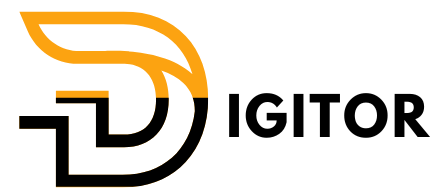Web Scraping and Automation with Python: Unlocking Efficiency
Introduction: The Power of Python in Automation
Python has revolutionized web scraping and automation by offering powerful libraries and frameworks that simplify complex tasks. Its versatility allows developers to extract data, automate workflows, and integrate these capabilities seamlessly into applications. For a web developer with Python expertise, mastering these tools unlocks endless possibilities for efficiency and innovation.
Why Python is Perfect for Web Scraping and Automation
1. Robust Libraries and Frameworks
Python provides dedicated libraries for web scraping, such as Beautiful Soup, Scrapy, and Selenium. These tools allow developers to extract structured data from websites effortlessly. Beautiful Soup is ideal for small projects, while Scrapy is designed for large-scale scraping and crawling tasks. Selenium adds the ability to interact with dynamic websites, simulating user behavior.
2. Streamlining Repetitive Tasks
Python’s automation capabilities go beyond scraping. Tools like Pandas and openpyxl help organize and analyze extracted data, while libraries like PyAutoGUI and schedule enable developers to automate routine processes like form submissions and email responses.
3. Scalability and Customization
Python is adaptable to different use cases. Whether you’re scraping product data for an e-commerce site or automating a marketing campaign, its modular architecture ensures scalable and customizable solutions.
Getting Started with Web Scraping in Python
1. Setting Up Your Environment
Begin by installing essential libraries:
pip install beautifulsoup4 requests
Beautiful Soup works alongside the Requests library to fetch and parse HTML content.
2. Writing a Basic Scraper
Here’s an example of extracting product names from a sample e-commerce site:
import requests
from bs4 import BeautifulSoup
response = requests.get("https://example.com/products")
soup = BeautifulSoup(response.text, "html.parser")
for product in soup.find_all("h2", class_="product-title"):
print(product.text)
3. Handling Advanced Scraping Needs
For dynamic websites requiring JavaScript execution, use Selenium:
pip install selenium
Integrate it with a browser driver like ChromeDriver for rendering dynamic content.
Best Practices for Web Scraping
1. Respect Website Policies
Always check a website’s robots.txt file to ensure compliance with scraping guidelines.
2. Use Throttling and Proxies
Avoid overwhelming servers by adding delays between requests and using proxy services for anonymity.
3. Clean and Store Data Efficiently
Store scraped data in structured formats like CSV or databases using Python libraries like Pandas or SQLAlchemy.
Automation with Python
1. Scheduling Tasks
Use Python’s schedule or APScheduler libraries to automate scraping tasks at regular intervals.
2. Automating Web Interactions
Selenium can automate user interactions, such as filling out forms or navigating multi-step processes, for dynamic websites.
3. Data Processing and Reporting
Combine scraping and automation by generating reports with libraries like Matplotlib or exporting data to dashboards using Flask.
Applications of Web Scraping and Automation
1. E-Commerce Price Monitoring
Track competitor pricing or availability of products in real time.
2. Market Research and Lead Generation
Extract contact details or gather trends from industry websites.
3. Content Aggregation
Automate the collection and curation of articles or blog posts.
Challenges and Solutions
1. Anti-Scraping Measures
Websites may block scraping attempts. Counteract this with rotating proxies or user-agent strings. External Resource: Learn about scraping proxies.
2. Data Volume and Speed
Large-scale scraping may require distributed crawling frameworks like Scrapy or tools like AWS Lambda for scalability.
Conclusion: Transforming Efficiency with Python
Web scraping and automation in Python empower developers to unlock efficiency, handle data-driven projects, and streamline workflows. By combining the right tools and best practices, you can overcome challenges and create scalable, innovative solutions.
Looking to enhance your web scraping or automation projects? Contact us today for expert assistance.
External Resources
Flask Documentation
Django REST Framework
Explore more related articles to deepen your understanding and make informed choices about graphic design techniques
WordPress Website Developer: Expert Solutions for Your Online Presence
Custom WordPress Development: Tailored Websites for Your Business







